4.1 What are the steps required to establish innovative and sustainable financing for health promotion and tobacco control?
Welcome. The speaker for this module is Prof Dr Prakit Vathesatogkit, Executive Director, Action of Smoking and Health Foundation Thailand (ASH Thailand), and Advisor of Thai Health Promotion Foundation (ThaiHealth).
Choose between video, audio or transcript to learn about this section.
Audio:
Hi everyone, I’m Dr. Prakit Vathesatogkit, from the Action of Smoking and Health Foundation in Thailand, and also the advisor to Thailand Health Promotion Foundation, or ThaiHealth. Today, I want to share with you what are the steps required to establish an innovative and sustainable financing for health promotion and tobacco control.
To advocate, and lobby to set up an innovative and sustainable financing mechanism to support health promotion and tobacco control, there are several strategies needed. First of all, we need leadership and dedication for the group who are involved in pushing this sustainable financing mechanism, and secondly, we need to generate evidence because we need to win the heart of the politicians as well as the general support of the public. Then, you need to prepare a good draft of legislation for the sustainable financing mechanism to support health promotion and tobacco control. We also need to be prepared for opposition from groups – for example, the industry, and also we need to do this at a good timing – for example, before a general election. Ideally, it should be proposed to the government right after they form a new government cabinet. So, these are the steps that needed to carefully strategise to advocate and lobby for a sustainable financing mechanism for health promotion and tobacco control.
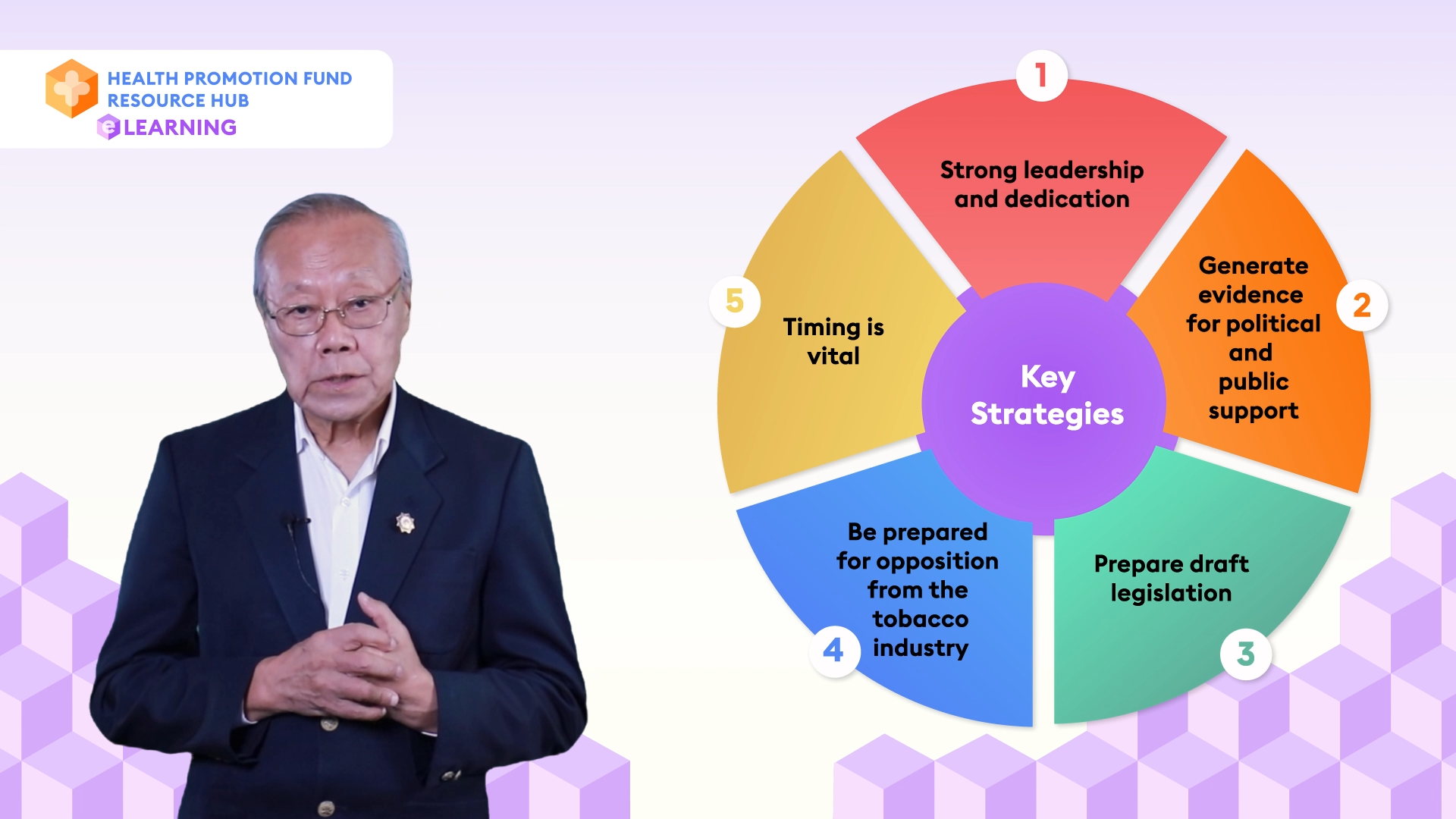
So, to convince the policymakers and the public to support this innovative financing mechanism for health promotion and tobacco control, we need to generate evidence that the burden of diseases that our country is receiving from the major Non-Communicable Diseases (NCDs) – the disease burden. And secondly, the economic costs as a result of these diseases and premature deaths. And thirdly, we need to know the existing health care expenditure, as well as the health promotion budget the country is currently providing. So, there are three – 1) disease burden, 2) economic costs of disease burden, and 3) what are the budgets that we are promoting for curative treatment and health promotion.
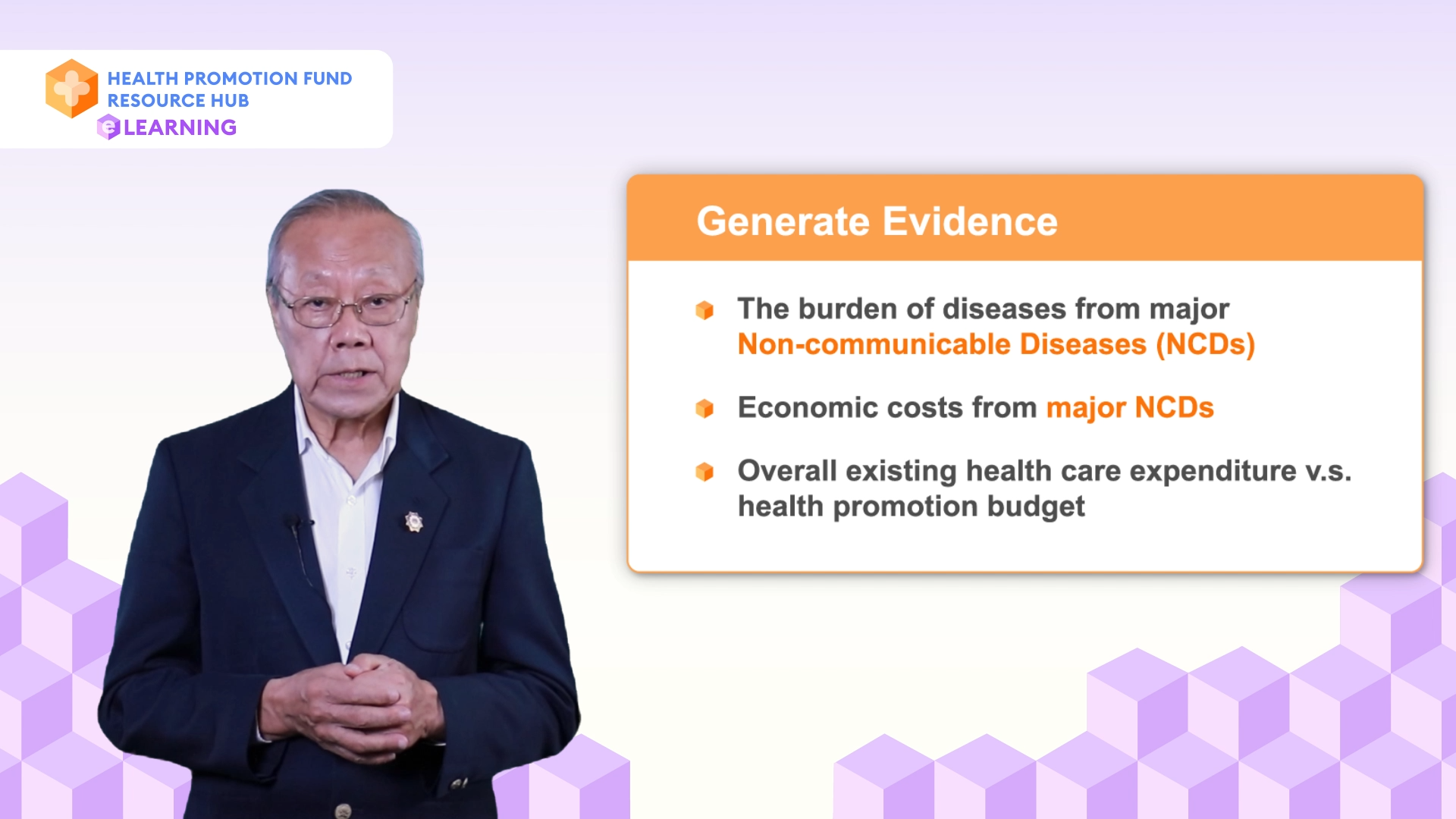
What happened in Thailand 20 years ago when we started to advocate and campaign for this innovative financing mechanism for health promotion? We generated the evidence – we estimated the health care costs from smoking, which is several hundred million. On the alcohol data, we have the per capita consumption of alcohol – which is very high in the world – we do not have the economic data. But for the traffic accident, which is one of the major causes of disabilities and deaths in Thailand, we do have the economic estimate of the loss from the traffic accident. At the same time, we have the figure of the budget for tobacco control, which the Ministry of Health is receiving – is very small and we do not have a budget for alcohol-related programmes for prevention and control, as well as we do not have a budget to support campaigns to raise awareness to prevent traffic accidents. So, these are the data we generated for the policymakers.
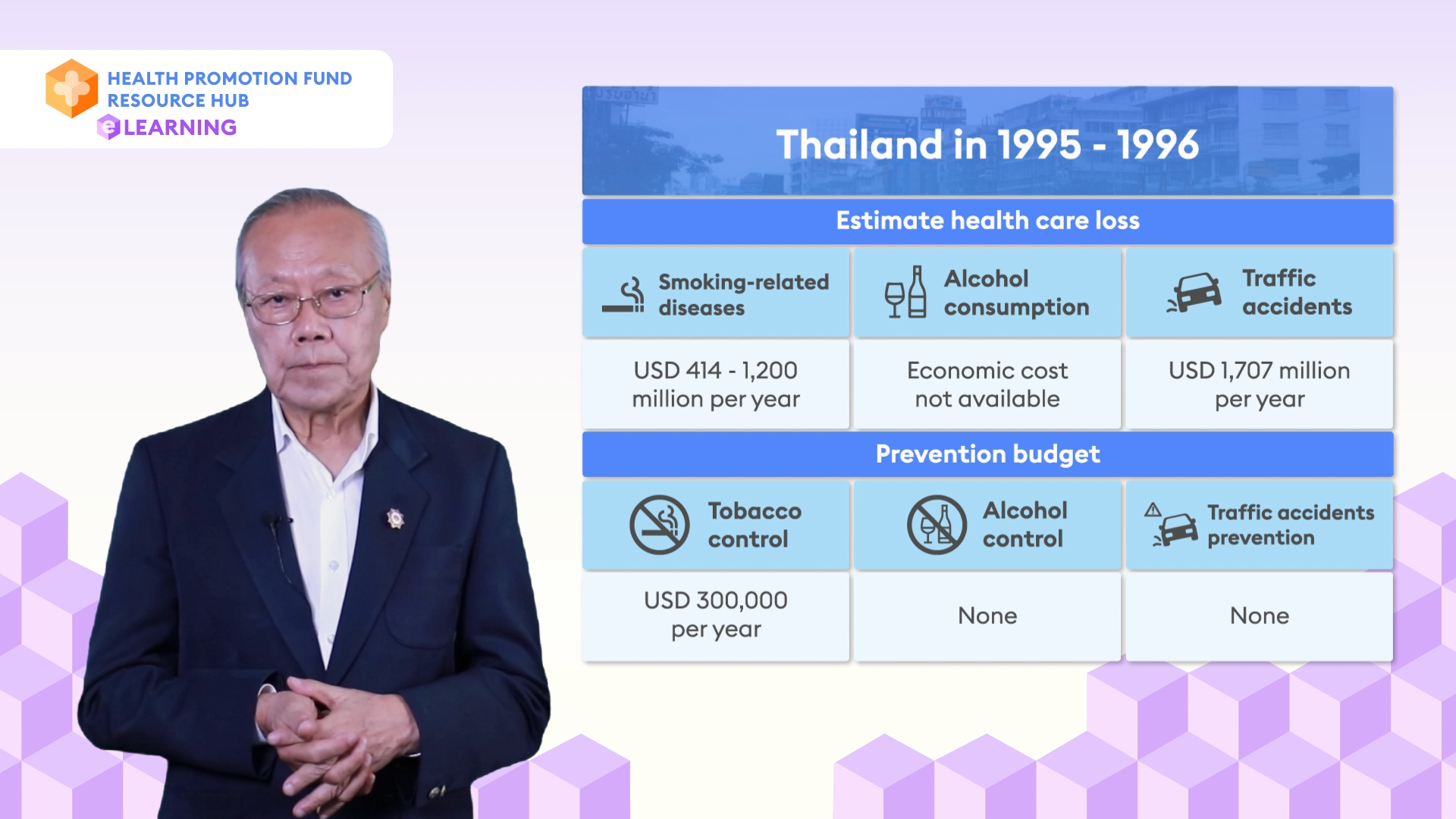
The economic argument that has been made at the time, is that after we estimated the economic loss from smoking, alcohol, and traffic accidents – we argued that if we invest in a health promotion fund, the c can reduce the burden of these three problems by only 10%, we already can save the country huge money, for example, equivalent to about USD 500 million annually.
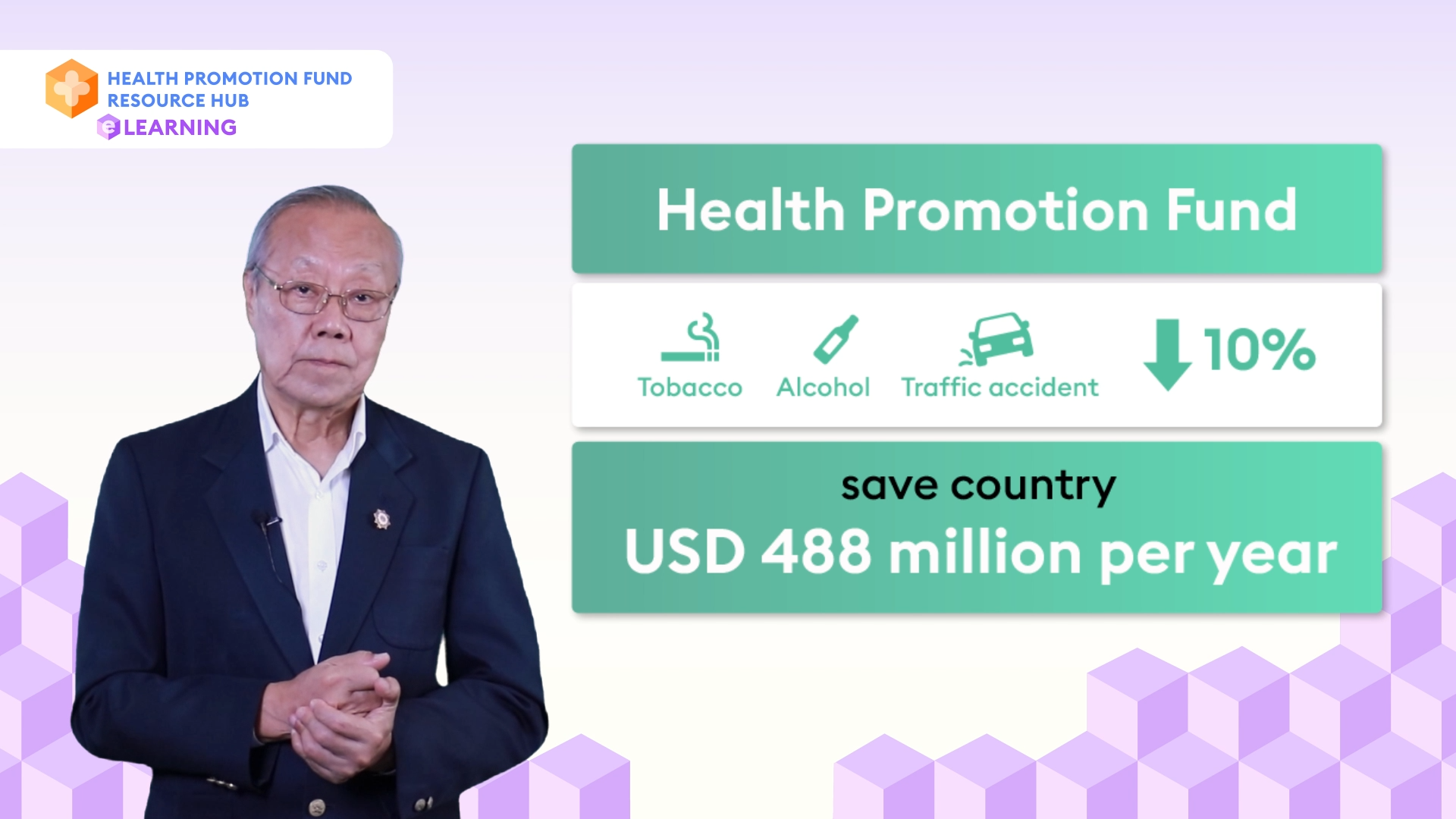
On tobacco control – 20 years ago, we did not have the benefit of this kind of study, which was done by UNDP, which showed that the tobacco control investment gives huge returns of money. They have classified each intervention. This can be shown to the policymakers that the health promotion fund, which will support tobacco control as well, is a good investment not just in health but also in economic terms.
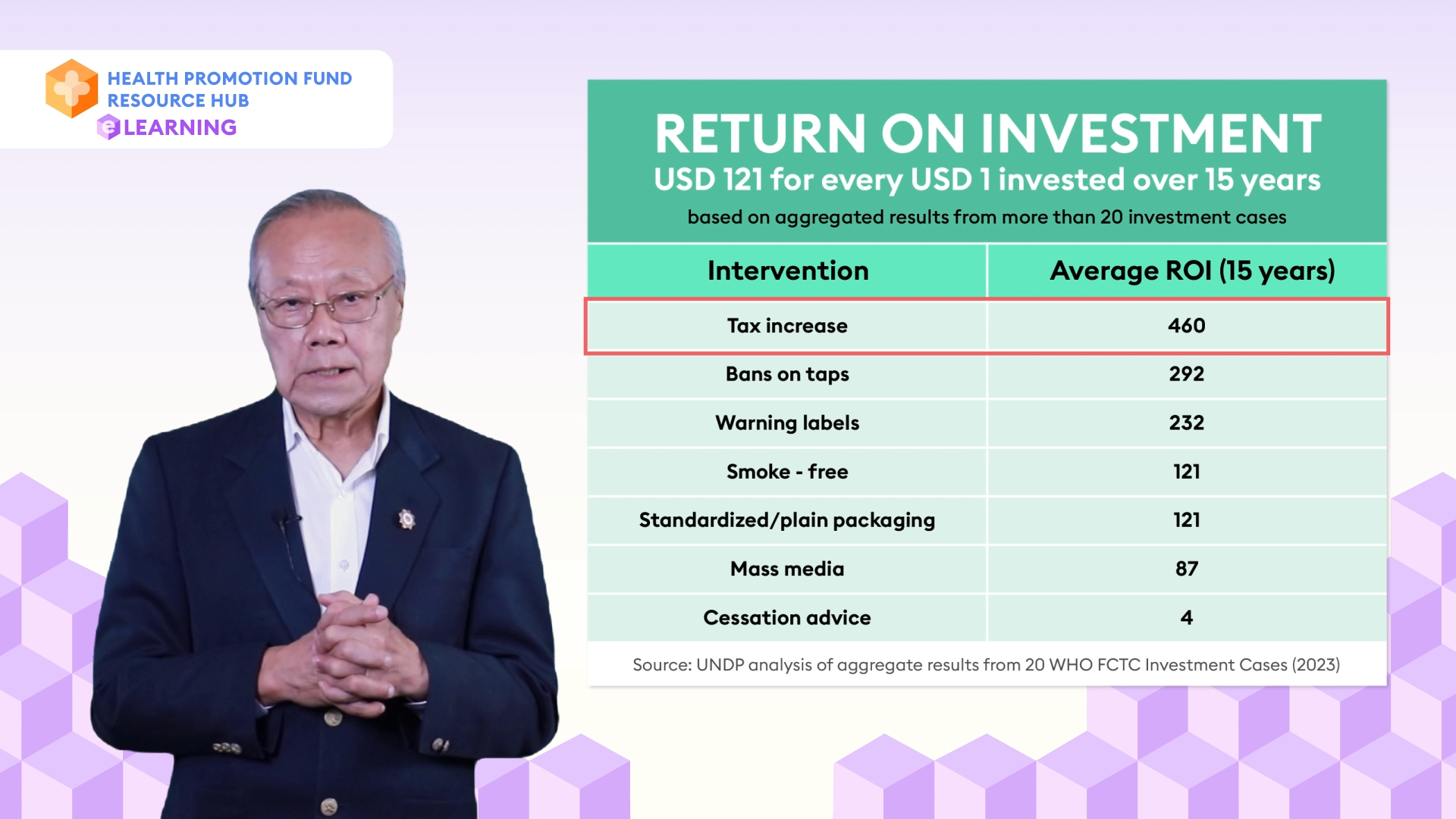
At the time, we proposed to the Thai government the size of the health promotion fund that we would like to propose is 1% of the national health budget. So we need to know, out of that figure, why 1% is to be used differently? The health care expenditure increases every year, we should set aside (additional) USD 1 from USD 100, and this USD 1 is to be used to support the health promotion programme, which can and will reduce the health care expenditure. In other words, we already have USD 100 for treatment, set aside (additional) USD 1 for health promotion, that should go hand-in-hand.
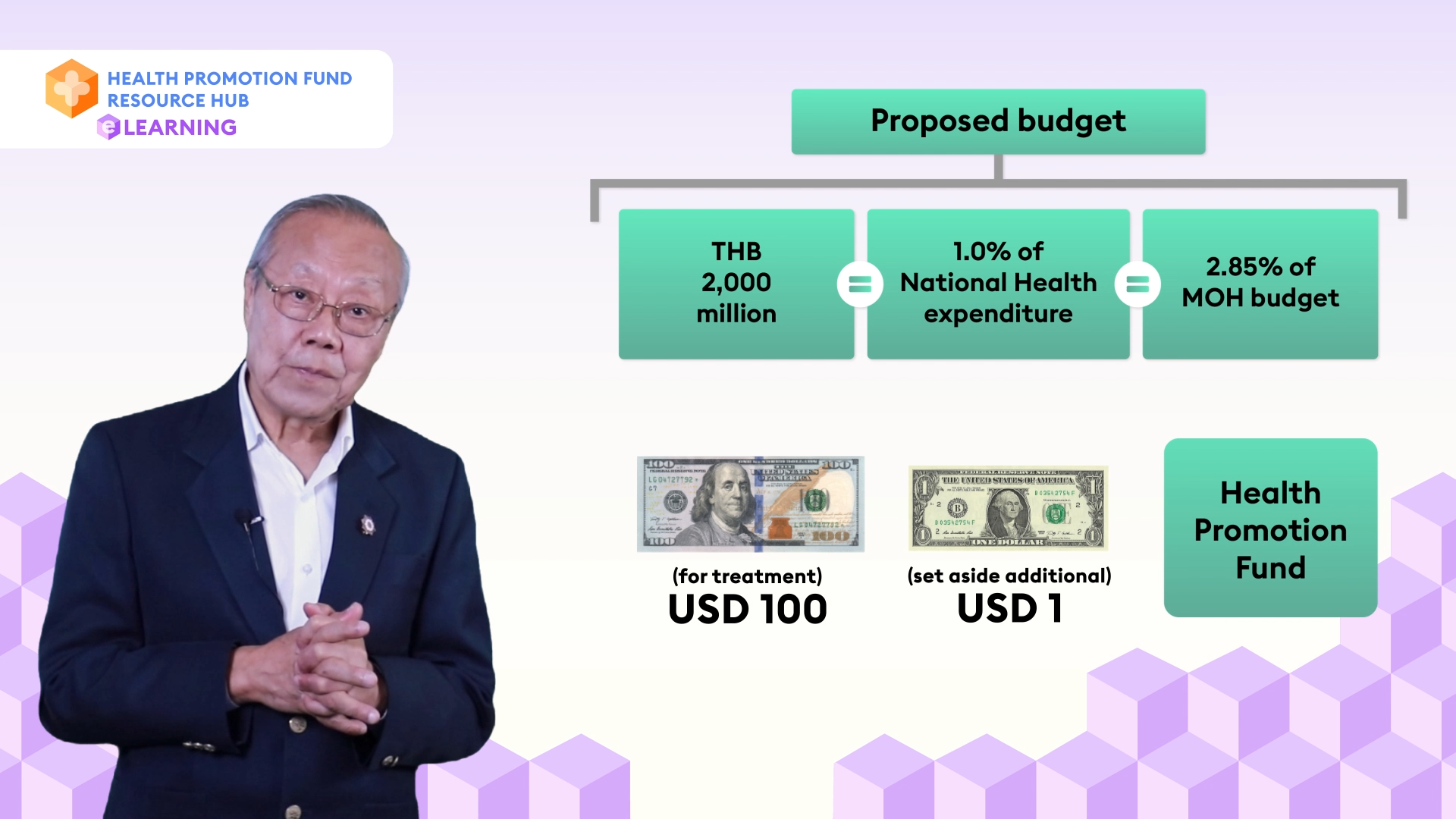
I would like to share with you that at that time, 20 years ago, we calculated the health expenditure and economic loss from the three major health problems like smoking, alcohol, and traffic accidents. Fortunately, the government was contemplating and discussing to have a policy for universal health care coverage.
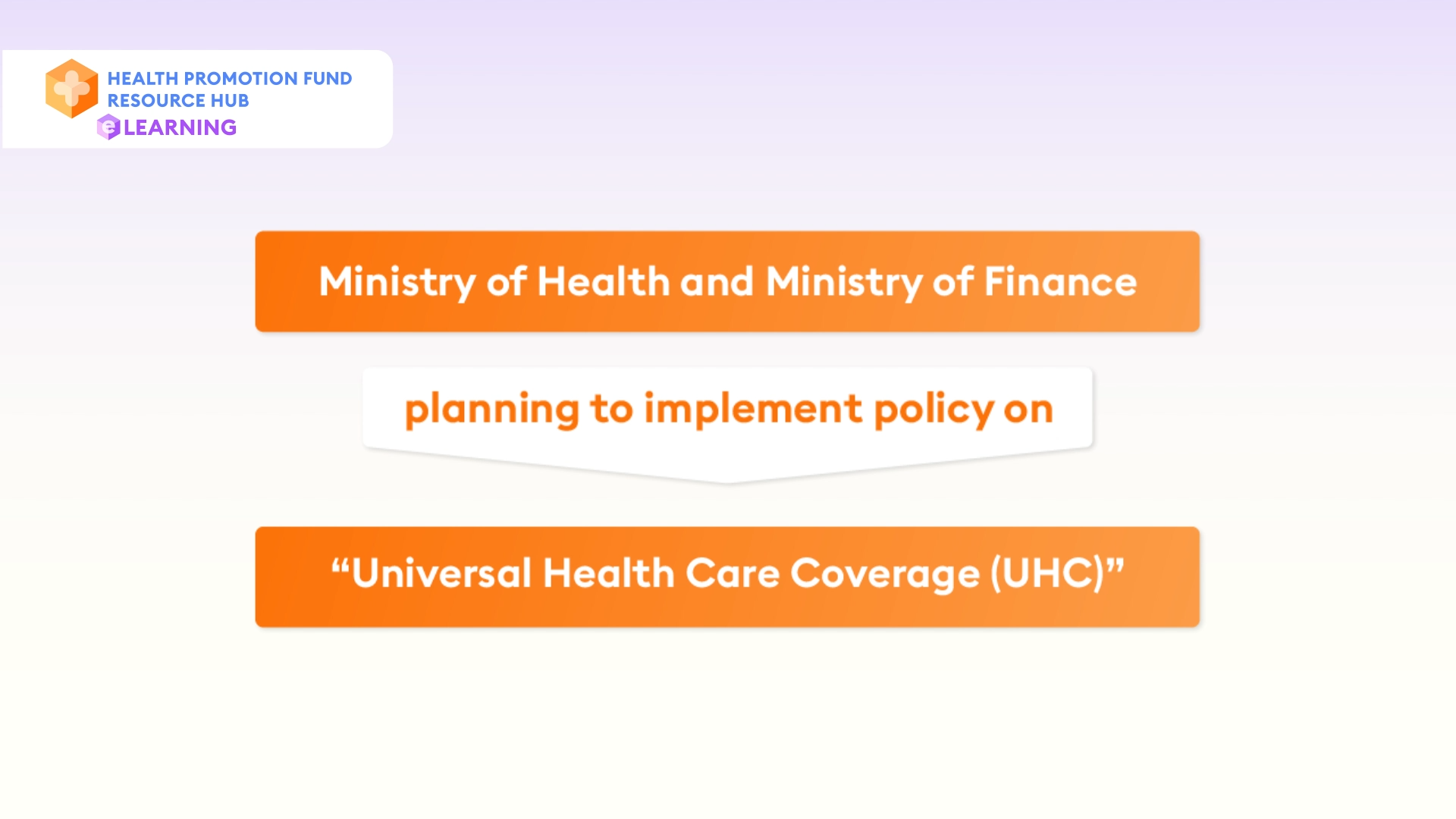
That means that you give the treatment for all populations in Thailand, and that will cost a lot, and need a lot of budgets.
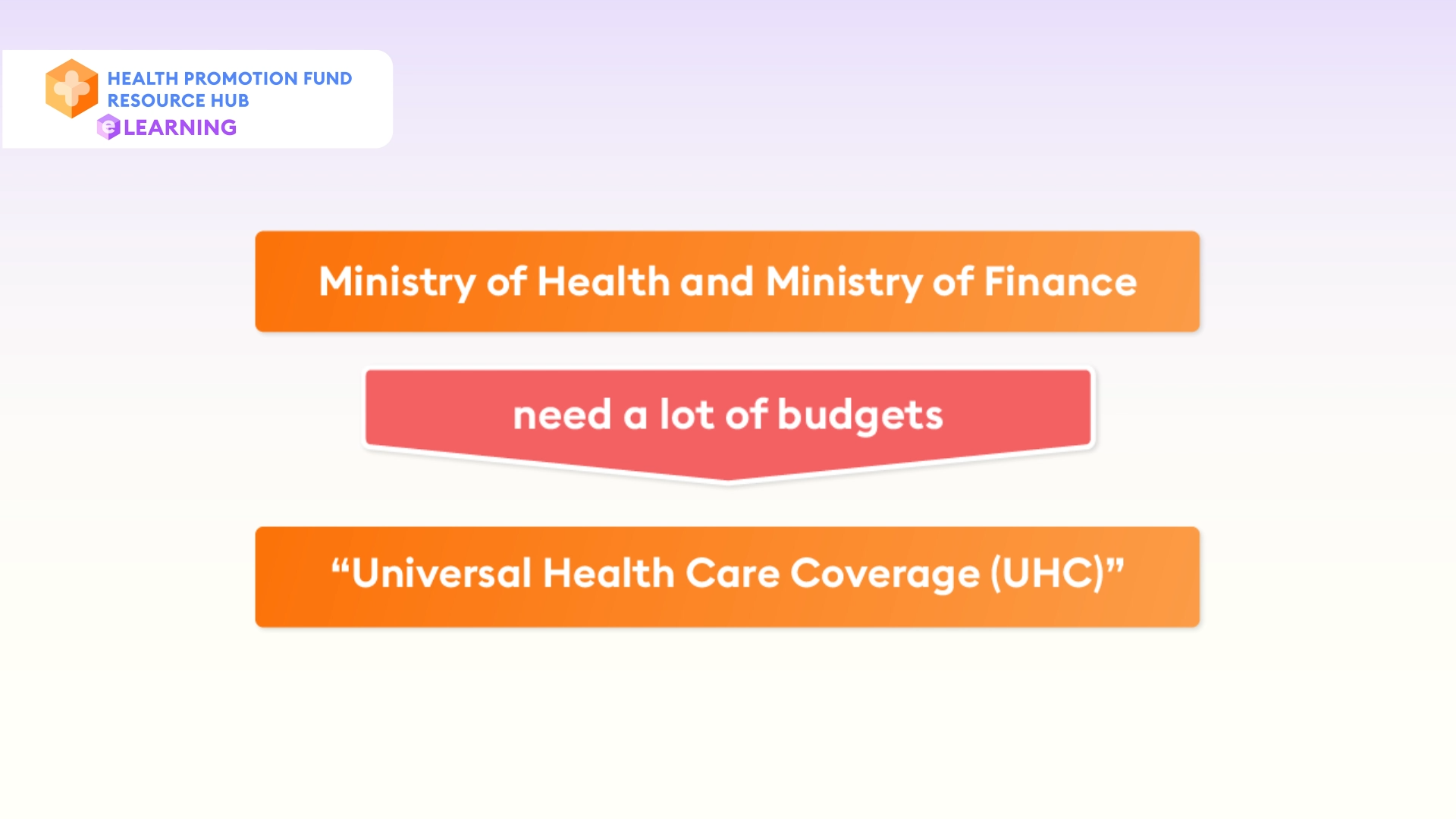
So we proposed to the government that the health promotion fund – which is a very small budget – could benefit in preventing people from getting sick by supporting the health promotion programme and tobacco control. Then, we will decrease the burden of the budget to support universal health care – the increase of the budget to support universal health care. These arguments get a lot of attention and buy-in from the policymakers.
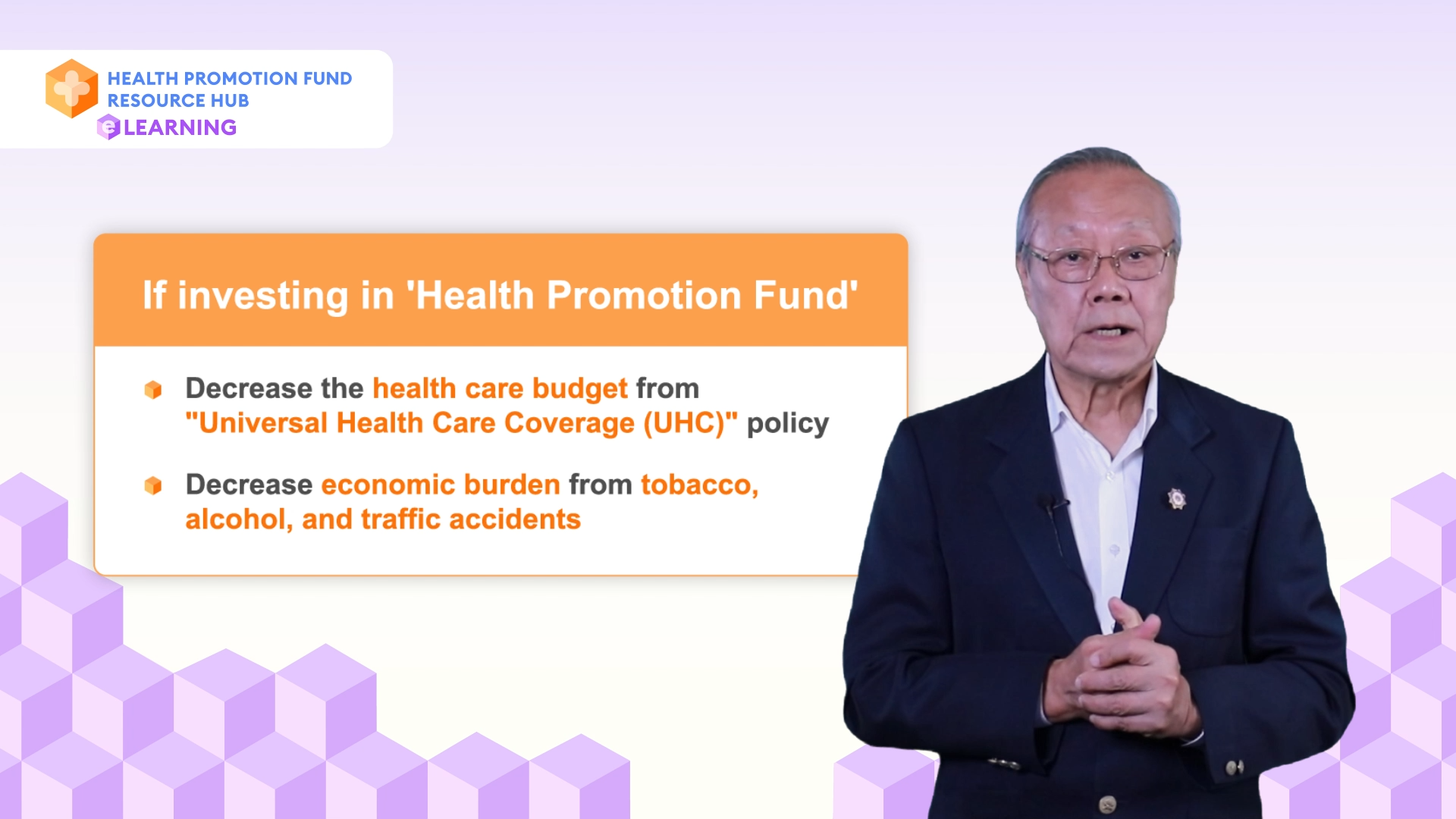
Yes, to establish an innovative and sustainable financing mechanism to fund health promotion and tobacco control need to be passed as the law by the parliament. Generating political support is the most important. The argument we made at that time was, that is both health and economic gains. And secondly, we proposed this to supplement – to go hand-in-hand with the universal health insurance that the government is contemplating – which I believe many countries are still in the process of starting universal health coverage or increasing the coverage of universal health insurance programmes that are already existed.
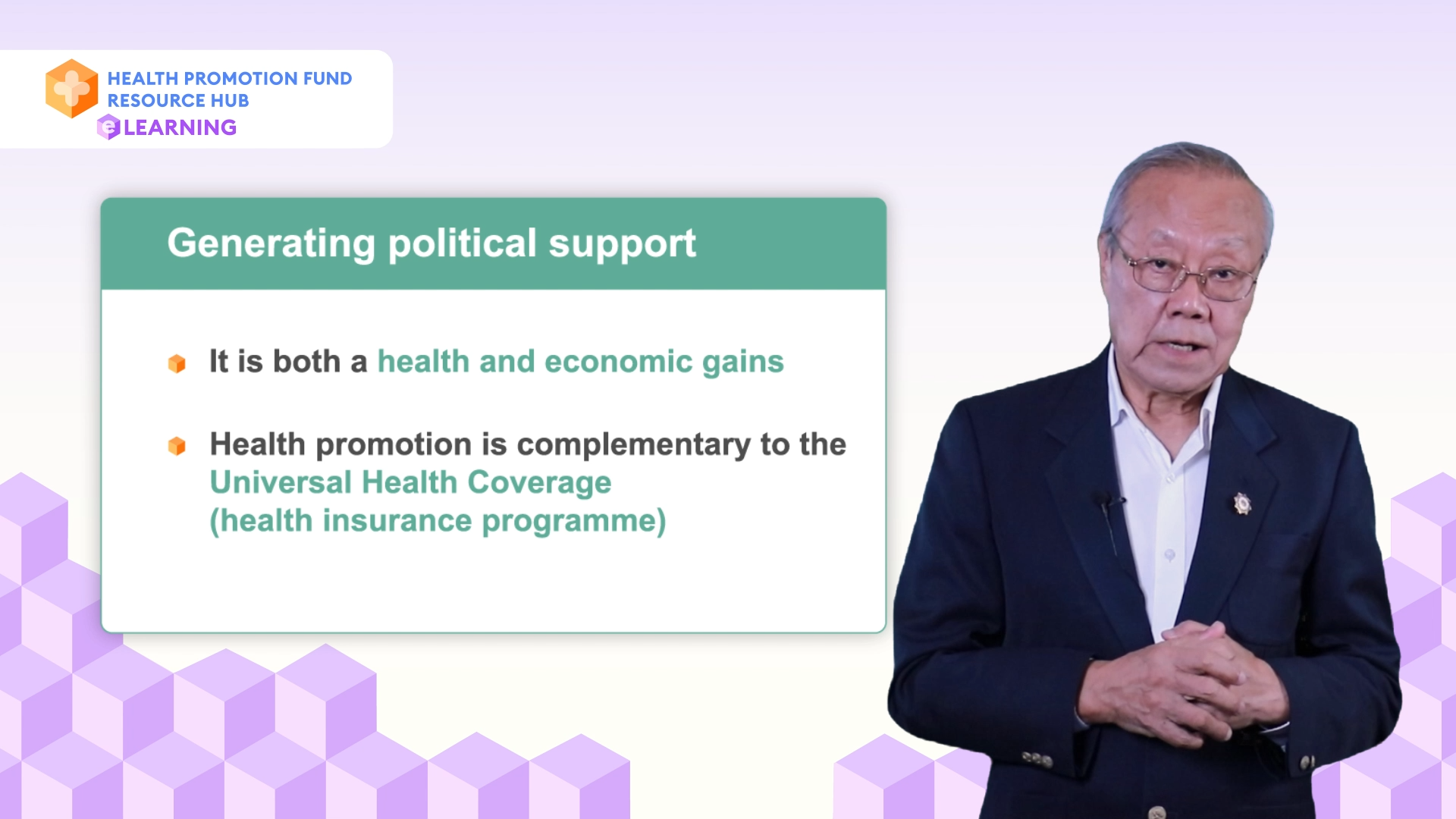
Taxes on tobacco and alcohol – when in the process of setting up innovative financing, you have to increase tax on tobacco and alcohol, to generate a huge amount of revenue for the government as it will decrease the burden of health harmful products.
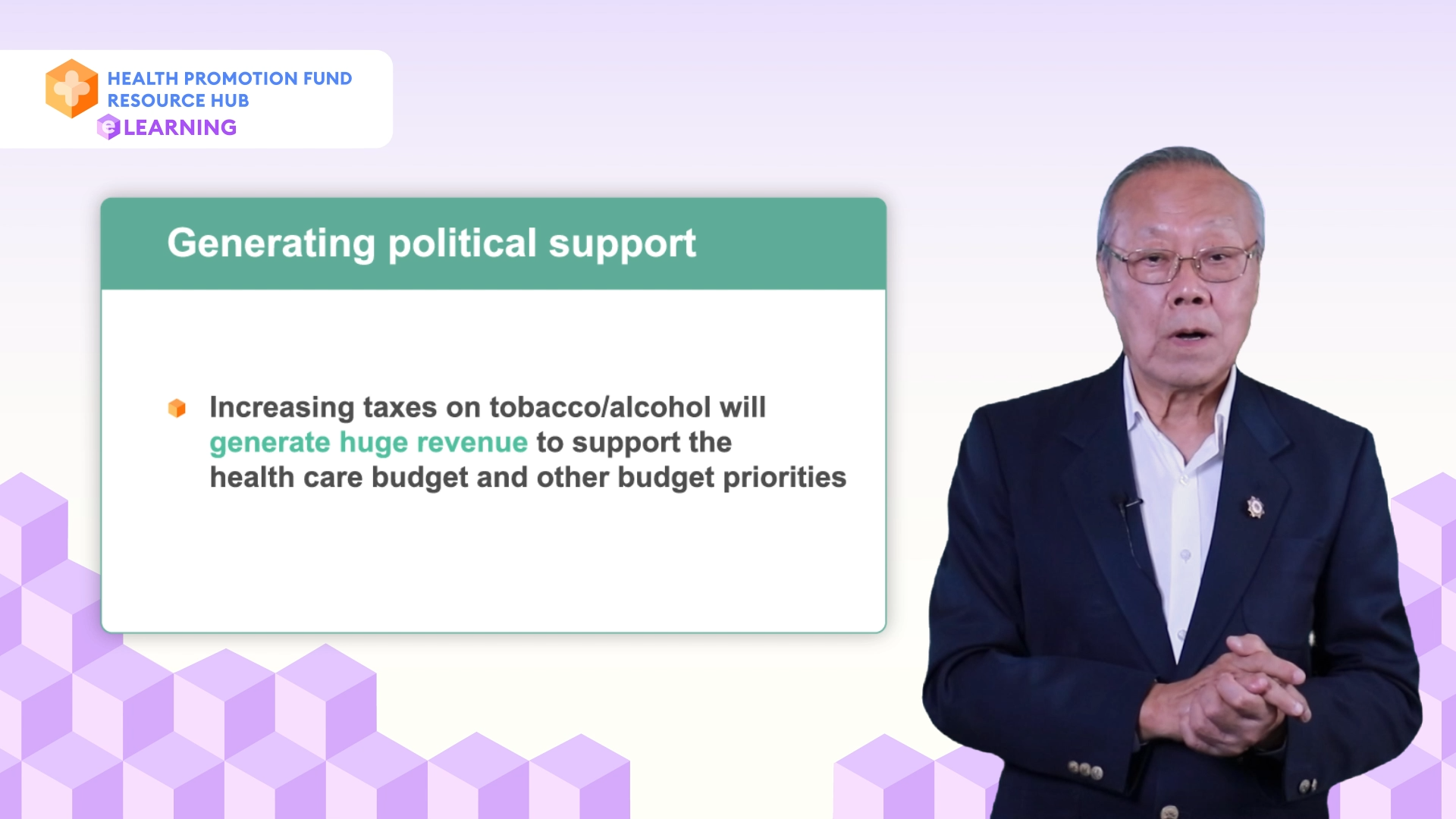
And finally, today, we have the global recognition and resolution to support our movement of setting up a sustainable financing mechanism to support NCDs prevention – such as the UN high-level declaration on the NCDs control, and the WHO FCTC tobacco control treaty, both recommend establishing innovative and sustainable financing to support NCDs and tobacco control. Use that for your argument, besides the health and economic costs and tying to the universal coverage that I have just mentioned.
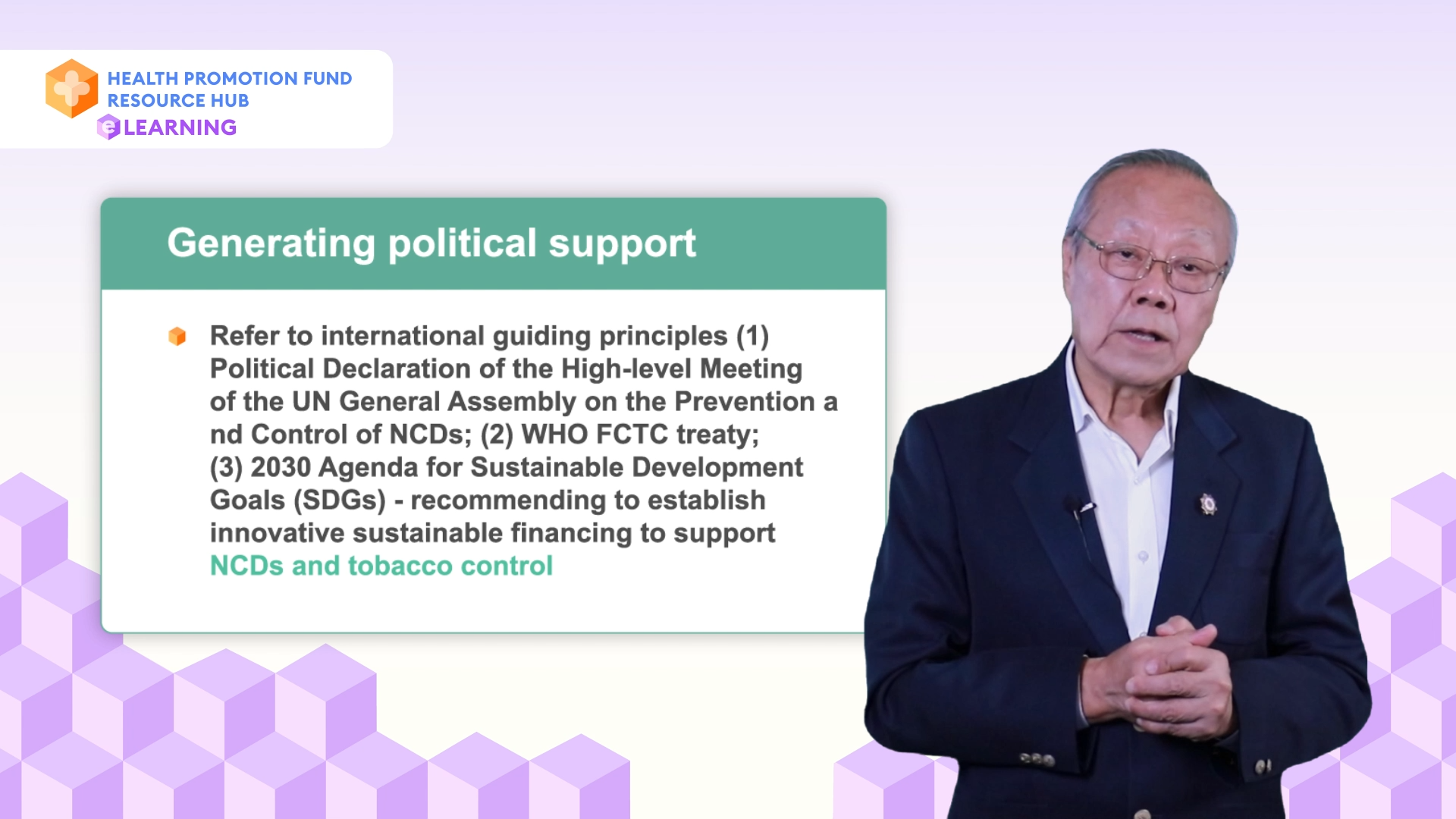
So, now it comes to the part that – how do we get the money to fund this health promotion?
The question comes – originally, we proposed to get 2% of the taxes that were collected from tobacco and alcohol, or “Earmarked tax” or “Dedicated tax”, to be put into this health promotion fund. Now, this mechanism of getting some percent from the tax collected to support a health promotion programme is opposed by the Ministry of Finance (MOF) and also by most countries because they said this is against the financial fiscal discipline. So to get around it in Thailand, we proposed that for the 100% that the excise department is getting from tobacco and alcohol tax, they took the 100%. We asked the government to collect 2% more from the 100% – 2% more – from the industry, so we call it a ‘surcharge’ – an additional charge to avoid the problem of the principle of getting the tax (revenue) from the existing tax that has already been collected to dedicate for some purposes.
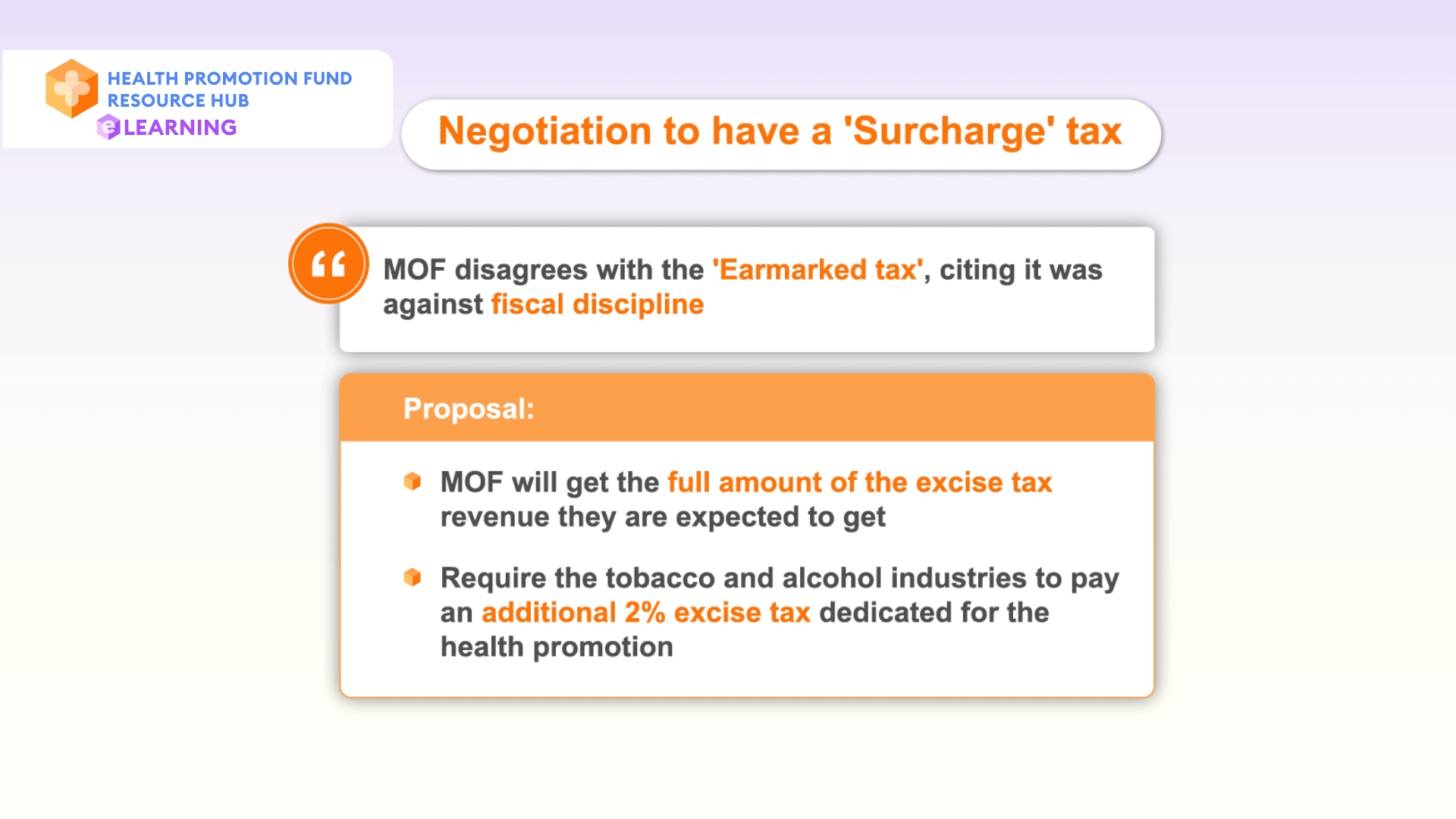
Now, some countries do not call it the ‘surcharge’ – they call it the ‘compulsory contribution’ by the industry. The case that I am talking about is the Vietnam law. They call it a compulsory contribution, which is another word used – you pay more except (in addition) to what you have or need to pay for the excise tax. This is a very small amount of tax that the industry has to pay. We did a public poll showing that the public support – strongly supports getting this extra tax (sin tax) to support health promotion to improve people’s health. And also as I mentioned several times, we tie this into the universal health insurance programme – which I think this still can be an advocacy point for other countries. Some countries may be in the process of setting up this universal healthcare, or some people (countries) already have universal health insurance coverage but the coverage needs to increase more. So these are how we won the argument to get the 2% ‘surcharge’ tax on top of the tobacco and alcohol excise tax.
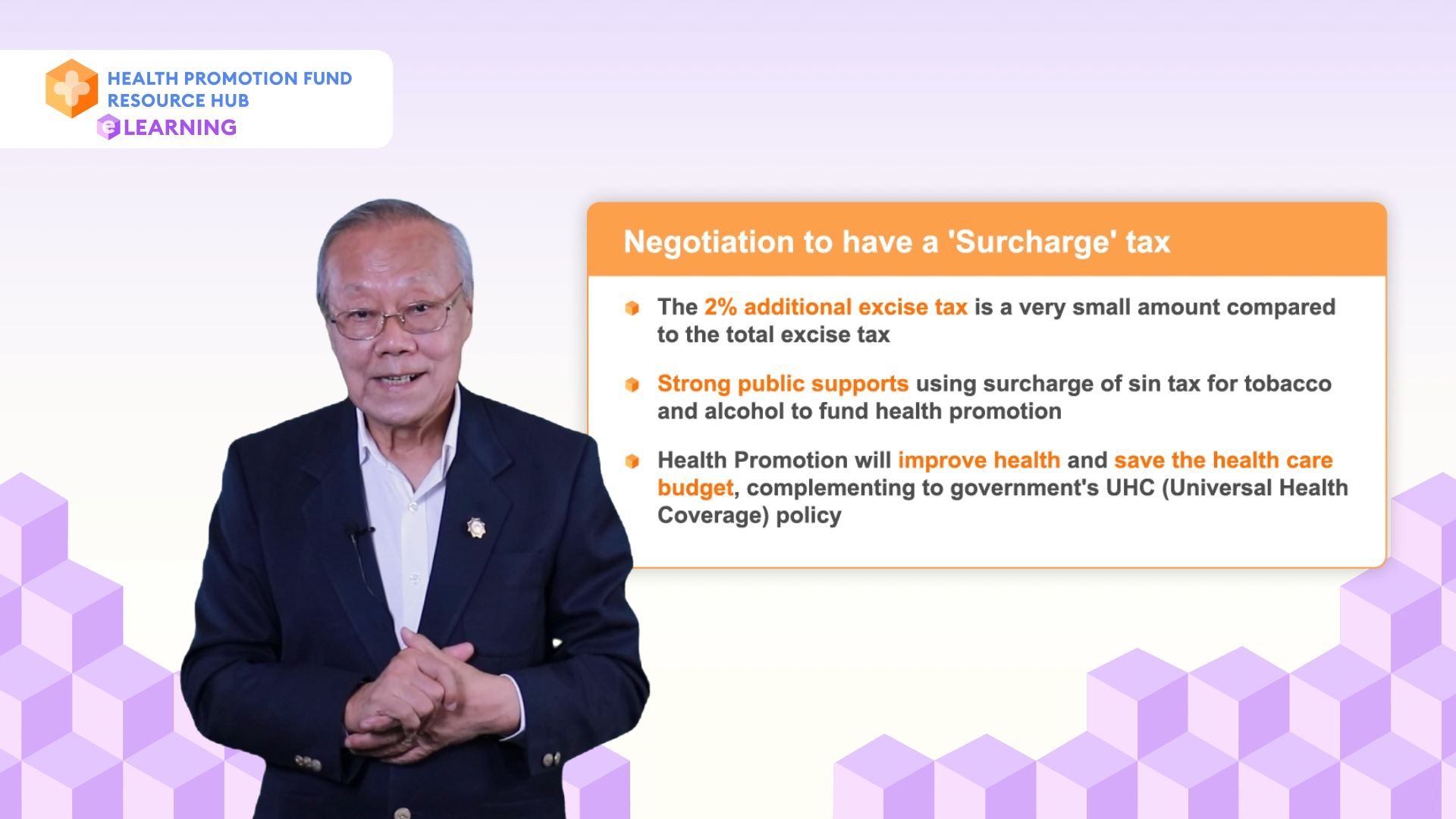
In summary, I have shown you and I will share with you the key factors needed to achieve setting up an innovative financing mechanism for health promotion and tobacco control. First of all, we need evidence of both health and economic evidence of the burden of NCDs. Secondly, the government is responsible – this is one of our arguments – the government is responsible to protect health and to support the country’s development so they need to support this funding to prevent people from getting sick and their well-being. And then we frame it as an economic and development issue that we tie in with the universal health insurance policy that the government is about to support. Now, we have the benefit and privilege of global body recommendations to support innovative sustainable financing to control NCDs, and also to control tobacco under the WHO FCTC tobacco treaty. We have to show to the government that sin tax – an additional sin tax – to support health promotion is a popular policy. Then we use the tactic that Thailand has used – which is to recommend collecting additional tax we call ‘surcharge’ on top of the excise tax.
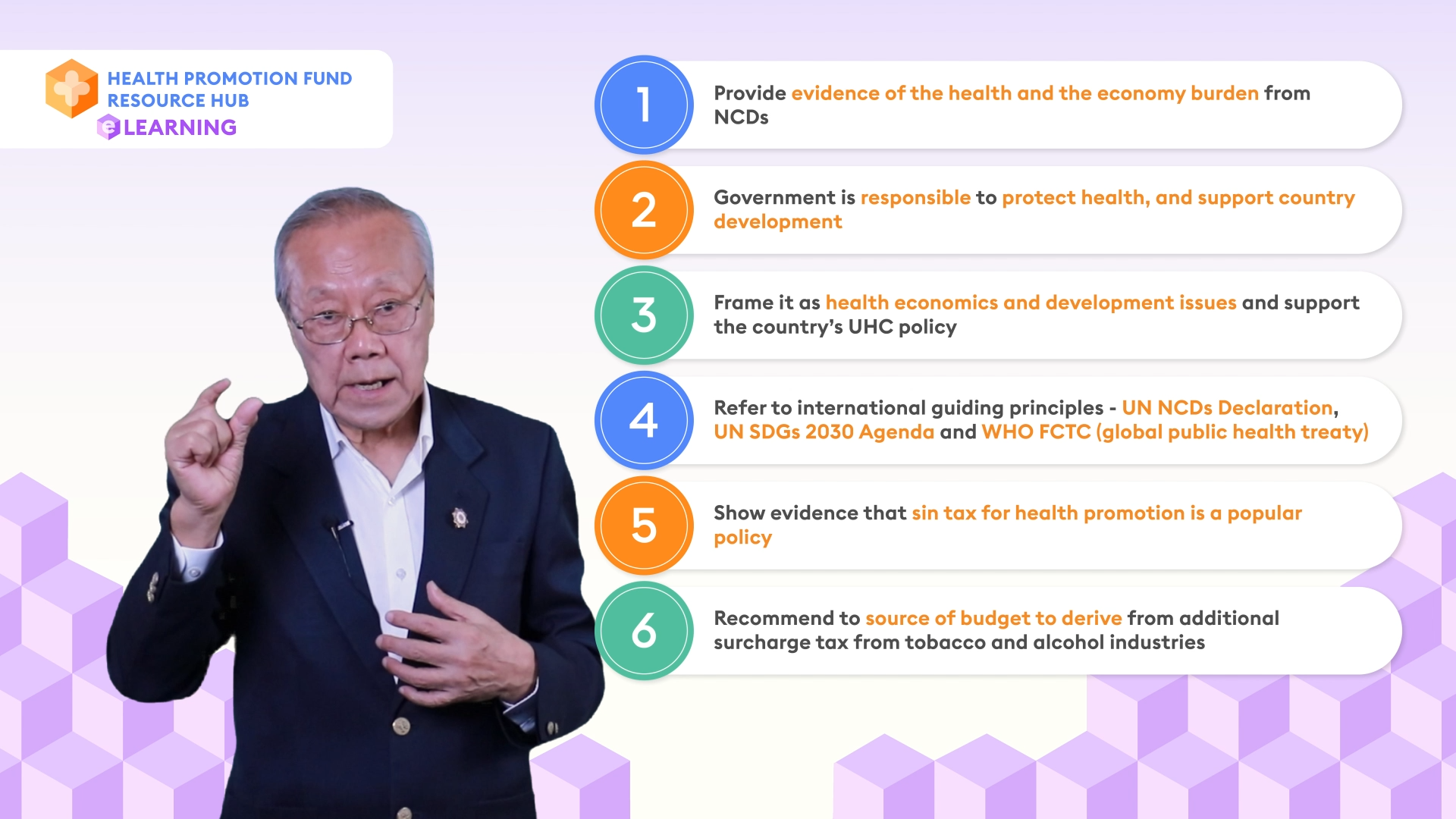
Most importantly, I would like to tell you that this is doable, many countries have tried and then set up the health promotion foundation fund and they benefit greatly from this fund in supporting health promotion programmes and tobacco control. So, go and do it and keep trying until you are able to reach your objective of setting up a sustainable financing mechanism to support health promotion and tobacco control. Good luck!




